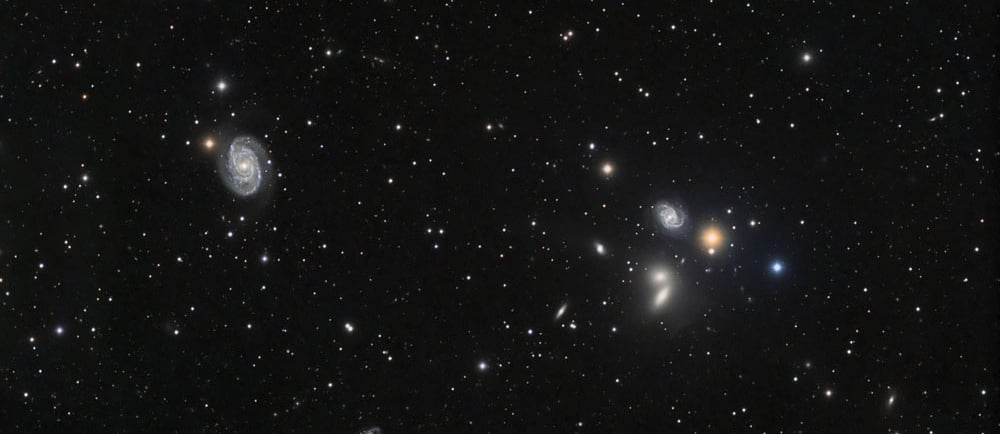The Big Lick Galaxy Group: A Cosmic Spectacle in Canes Venatici


The Big Lick Galaxy Group
The universe is dotted with fascinating celestial phenomena, each with its own unique characteristics and charm. Among these, the Big Lick Galaxy Group emerges as a significant cosmic entity. Located approximately 100 million light-years away from Earth, this group comprises ten galaxies, each contributing to our understanding of the universe. The Big Lick Galaxy Group is particularly notable for its barred spiral morphology, which helps astronomers glean insights into the dynamics of galaxy formation and evolution.
Characteristics of the Big Lick Galaxy Group
The Big Lick Galaxy Group includes several galaxies that are visible through telescopes, especially from the northern hemisphere. This accessibility permits amateur and professional astronomers alike to study these fascinating structures. The classification of the Big Lick as a barred spiral galaxy presents alluring questions regarding its formation, rotation, and stellar population. The presence of a bar structure within the spiral arms is a common trait in such galaxy classifications, influencing star formation rates and overall galaxy behavior.
Observing the Big Lick Galaxy Group
For those interested in astronomy, observing the Big Lick Galaxy Group can be an exhilarating venture. Situated within the constellation Canes Venatici, this galaxy group is a point of interest for telescope owners and stargazers. With the right equipment and conditions, several of these galaxies are observable, offering a glimpse into the intricate dance of cosmic formations. The visibility of these galaxies makes them an ideal subject for astrophotography and celestial events, enriching our understanding of galactic structures.
The Big Lick Galaxy Group stands as a testament to the complexity of the cosmos. Encapsulating alluring spirals and a diverse array of galactic members, this group allows both casual observers and dedicated researchers to explore the breadth of the universe. By studying groups like Big Lick, we can expand our knowledge about galaxies’ genesis, their environments, and the potential for interactions among them.
In conclusion, the Big Lick Galaxy Group not only serves as a scientific subject of interest but also ignites the curiosity of many who gaze upon the night sky. With continued observation and research, our understanding of such galaxy groups will undoubtedly evolve, bringing us closer to answering fundamental questions about the universe we inhabit.
